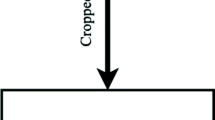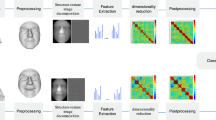Abstract
Digital image forgery detection is an important task in digital life as the image may be easily manipulated. This paper presents a novel blind tampering detection algorithm for images acquired from digital cameras and scanners. The algorithm is based on applying homomorphic image processing on each suspicious image to separate illumination from reflectance components. In natural images, it is known that the illumination component is approximately constant, while changes can be detected in tampered ones. Support Vector Machine (SVM) and Neural Network (NN) classifiers are used for classification of tampered images based on the illumination component, and their results are compared to obtain the best classifier performance. The Receiver Operating Characteristic (ROC) curve is used to depict the classifier performance. Three different color coordinate systems are tested with the proposed algorithm, and their results are compared to obtain the highest accuracy level. Joint Photographic Experts Group (JPEG) compressed images with different Quality Factors (QFs) are also tested with the proposed algorithm, and the performance of the proposed algorithm in the presence of noise is studied. The performance of the SVM classifier is better than that of the NN classifier as it is more accurate and faster. A 96.93% detection accuracy has been obtained regardless of the acquisition device.

















Similar content being viewed by others
References
Alahmadi A, Hussain M, Aboalsamh H et al (2017) Passive detection of image forgery using DCT and local binary pattern. SIViP 11:81–88. https://doi.org/10.1007/s11760-016-0899-0
Al-amri S, Kalyankar N, Khamitkar S (2010) A comparative study of removal noise from remote sensing image. IJCSI Int J Comput Sci 7:32–36
Alherbawi N, Shukur Z, Sulaiman R (2018) JPEG image classification in digital forensic via DCT coefficient analysis. Multimed Tools Appl 77:12805–12835
Ashiba H, Awadallah K, El-Halfawy S, Abd El-Samie F (2008) Homomorphic enhancement of infrared images using the additive wavelet transform. Electromagnet Res C 1:123–130
Bhartiya G, Jalal A (2017) Forgery detection using feature-clustering in recompressed JPEG images. Multimed Tools Appl 76:20799–20814
Bianchini M, Scarselli F (2014) On the complexity of neural network classifiers: a comparison between shallow and deep architectures. IEEE Trans Neural Netw Learn Syst 25(8):1553–1565
Birajdar G, Mankar V (2018) Blind image forensics using reciprocal singular value curve based local statistical features. Multimed Tools Appl 77:14153–14175
Cheng Y, Xing X, Zhang H (2011) Blind detection of Eclosion forensics based on Curvelet image enhancement and edge detection. International Conference on Multimedia and Signal Processing 316–320
Chien C, Tesng D (2011) Color image enhancement with exact HSI color model. Int J Innov Comput Inform Contrl 7(12):6691–6710
Choi C, Lee M, Hyun D, Lee H (2012) Forged region detection for scanned images. Computer Science and Convergence. Lect Notes Electr Eng 114:687–694
Chuang W, Swaminathan A, Wu M (2009) Tampering identification using empirical frequency response. IEEE International Conference on Acoustics, Speech and Signal Processing 1517–1520
Dixit P, Dixit M (2013) Study of JPEG image compression technique using discrete cosine transformation. Int J Interdisciplin Res Innov IJIRI 1(1):32–35
Elsharkawy Z, Abdelwahab S, Dessouky M, Elaraby S, Abd El-Samie F (2013) Accurate and robust identifying forged region method in scanned images. Int J Comput Appl 83:40–47
Elsharkawy Z, Abdelwahab S, Dessouky M, Elaraby S, Abd El-Samie F (2013) Identifying unique flatbed scanner characteristics for matching a scanned image to its source. CiiT Int J Digit Image Process 5:397–403
Fan D, Cheng M, Liu Y, Li T, Borji A (2017) Structure-measure: A New Way to Evaluate Foreground Maps. IEEE International conference on Computer Vision (ICCV) 4558–4567
Fan D, Gong C, Cao Y, Ren B, Cheng M & Borji A (2018) Enhanced-alignment measure for binary foreground map evaluation. International Joint Conference on Artificial Intelligence (IJCAI) 698–704
Fang Y, Dirik A, Sun X, Memon N (2009) Source class identification for DSLR and compact cameras. IEEE International Workshop on Multimedia Signal Processing
Farid H (2009) Image forgery detection. IEEE Signal Process Mag 26:16–25
Fawcett T (2006) An introduction to ROC analysis. Pattern Recogn Lett Elsevier Sci Inc 27:861–874
Fridrich J (2009) Digital image forensics. IEEE Signal Process Mag 26(2):26–37
Gupta B, Gupta M, Chadha B (2014) Image compression technique under JPEG by wavelets transformation. IJARCSSE 4:808–818
Hayat K, Qazi T (2017) Forgery detection in digital images via discrete wavelet and discrete cosine transforms. Comput Electr Eng 62:448–458
Hilal A (2018) Image re-sampling detection through a novel interpolation kernel. Forensic Sci Int 287:25–35
Huang F, Shi Y (2010) Detecting double JPEG compression with the same quantization matrix. IEEE Trans Inform Sec 5(4):848–856
Khanna N, George T, Allebach J, Delp E (2008) Scanner identification with extension to forgery detection. SPIE Security, Forensics, Steganography, and Watermarking of Multimedia Contents
Kumar R, Indrayan A (2011) Receiver operating characteristic (ROC) curve for medical researchers. Indian Pediatr 48(4):277–287
Lai Y, Huang T, Lin J, Lu H (2018) An improved block-based matching algorithm of copy-move forgery detection. Multimed Tools Appl 77:15093–15110
Lin G, Chang M, Chen Y (2011) A passive-blind forgery detection scheme based on content-adaptive quantization table estimation. IEEE Trans Circ Syst Video Technol 21(4):421–434
Liu W, He P, Li H, Yu H (2012) Improvement on the Algorithm of Homomorphic Filtering. International Conference on Electrical and Computer Engineering Advances in Biomedical Engineering 120–124
Liu A, Zhao Z, Zhang C, Su Y (2017) Median filtering forensics in digital images based on frequency-domain features. Multimed Tools Appl 76:22119–22132
Nie F, Huang Y, Wang X, Huang H (2014) New primal SVM solver with linear computational cost for big data classifications. International Conference on Machine Learning
Pipariyal T, Agrawa S (2014) Statistical moments and fuzzy logic based classification of noise present in digital image. Int J Adv Res Comput Commun Eng 3(7):7453–7456
Poisel R, Tjoa S (2011) Forensics investigations of multimedia data: a review of the state-of-the-art. IEEE International Conference on IT Security Incident Management and IT Forensics 48- 61
Popescu A, Farid H (2004) Exposing digital forgeries by detecting duplicated image regions. Technical report, TR2004–515. Dartmouth College, Computer Science
Popescu A, Farid H (2005) Exposing digital forgeries by detecting traces of re-sampling. IEEE Trans Signal Process 53(2):758–767
Pradeepthi T, Ramesh A (2011) Pipelined architecture of 2d-dct, quantization and zigzag process for JPEG image compression using VHDL. Int J VLSI Design Commun Syst 2(3):99–110
Pradhan A (2012) Support vector machine-a survey. Int J Emerg Technol Adv Eng 2(8):82–85
Saleh S, Ibrahim H (2012) Mathematical equations for homomorphic filtering in frequency domain: a literature survey. International Conference on Information and Knowledge Management 74–77
Sharma B, Venugopalan K (2014) Comparison of neural network training functions for hematoma classification in brain CT images. IOSR-JCE 16(1):31–35
Singh S, Chauhan D, Vatsa M, Singh R (2003) A robust skin color based face detection algorithm. Tamkang J Sci Eng 6(4):227–234
Sridhar S, Kumar P, Ramanaiah K (2014) Wavelet transform techniques for image compression – an evaluation. IJ Image Graph Sign Process 2:54–67
Srinivas V, Rani C, Madhu T (2014) Neural network based classification for speaker identification. Int J Signal Process Image Process Pattern Recogn 7:109–120
Sun P, Lang Y, Fan S et al (2018) Exposing splicing forgery based on color temperature estimation. Forensic Sci Int 289:1–11
Sundermeyer M, Oparin I, Gauvain J et al. (2013) Comprasion of feedforward and recurrent neural network language models. IEEE international conference on Acoustics, Speech and Signal Processing 8430 – 8434
Yuan H (2011) Blind forensics of median filtering in digital images. IEEE Trans Inform Forensics Sec 6(4):1335–1345
Zeng D, Liu K, Lai S, Zhou G, Zhao J (2014) Relation classification via convolutional deep neural network. International Conference on Computational Linguistics 2335–2344
Zheng J & Liu M (2009) A Digital Forgery Image Detection Algorithm Based on Wavelet Homomorphic Filtering. International Workshop on Digital Watermarking 152–160
Zhou L (2007) Study of digital forensics based on image content. Ph.D. Thesis, Beijing University of Posts and Telecommunications
Zhulong L, Xianghua L, Yuqian Z (2011) Passive Detection of Copy-paste Tampering for Digital Image Forensics. International Conference on Intelligent Computation Technology and Automation 663–65626
Author information
Authors and Affiliations
Corresponding author
Additional information
Publisher’s note
Springer Nature remains neutral with regard to jurisdictional claims in published maps and institutional affiliations.
Rights and permissions
About this article
Cite this article
Elsharkawy, Z.F., Abdelwahab, S.A.S., Abd El-Samie, F.E. et al. New and efficient blind detection algorithm for digital image forgery using homomorphic image processing. Multimed Tools Appl 78, 21585–21611 (2019). https://doi.org/10.1007/s11042-019-7206-3
Received:
Revised:
Accepted:
Published:
Issue Date:
DOI: https://doi.org/10.1007/s11042-019-7206-3




